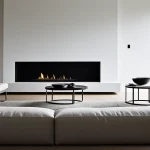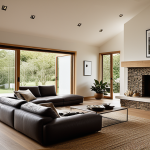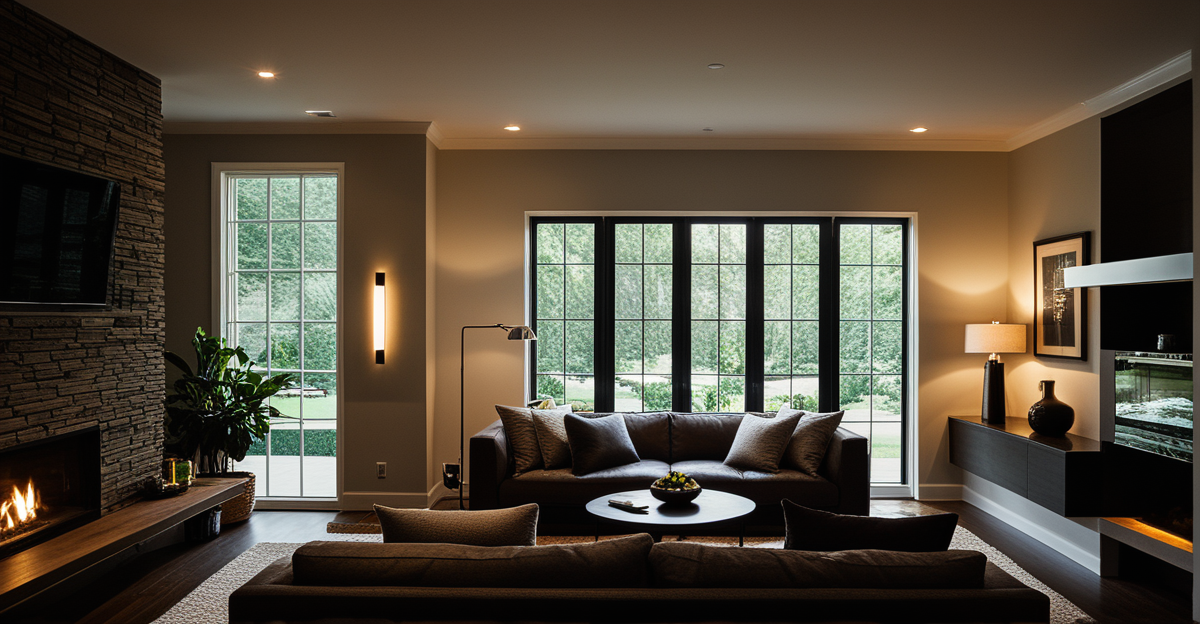The Role of Lighting in Shaping Home Ambiance
Lighting plays a crucial role in defining the home ambiance by directly influencing mood and atmosphere. Proper lighting in interior design creates spaces that feel welcoming, cozy, or vibrant depending on how light interacts with colors, textures, and room layouts. For example, warm, soft lighting often evokes relaxation, ideal for bedrooms or living areas, while brighter, cooler lighting tends to energize spaces like kitchens or home offices.
The impact of lighting extends beyond mere visibility—it shapes the emotional tone of a room. Subtle variations in intensity and color temperature can transform a space from dull to dynamic. Designers consider these effects to enhance the overall aesthetic while reflecting the homeowner’s personal style. For instance, minimalist interiors may benefit from sleek, discreet fixtures with adjustable brightness, whereas eclectic styles embrace decorative lamps that serve both functional and artistic purposes.
Also to read : How Can We Create a Cozy Atmosphere with Minimalist Decor?
Incorporating multiple lighting sources allows flexibility, enabling a balance between practicality and style. By thoughtfully selecting and layering lighting, homeowners can tailor each room’s ambiance, making lighting an indispensable element of interior design. Understanding this relationship empowers one to craft environments that truly resonate with individual preferences and lifestyle needs.
Types of Lighting and Their Functions
Lighting in interior design relies on three main types of lighting—ambient, task, and accent—which each serve distinct functions contributing to the overall home ambiance.
Also to discover : How Can You Transform Your Home into a Peaceful Sanctuary?
Ambient lighting provides the foundational light for a room, ensuring general visibility and setting the mood. It typically comes from ceiling fixtures, chandeliers, or recessed lights. For example, a soft, warm ambient glow in a living room creates a relaxing atmosphere ideal for unwinding or entertaining.
Task lighting focuses on illuminating specific areas where activities take place, such as reading, cooking, or working. Desk lamps, under-cabinet lights in kitchens, and bathroom vanity lights exemplify task lighting. Its purpose is to reduce eye strain and enhance functionality without overwhelming the space.
Accent lighting adds depth and highlights architectural features, artwork, or decorative objects. It shapes the aesthetic by drawing attention to focal points and enhancing texture or color contrasts. Spotlights, wall-mounted fixtures, and LED strips often serve this role.
The impact of lighting in interior design becomes clear through the balance of these types, which together create layered illumination. This interplay allows homeowners to adjust brightness and focus, tailoring ambiance to personal style and the room’s purpose. Understanding these lighting functions ensures every space feels intentional, comfortable, and visually appealing.
Selecting Fixtures and Bulbs for Maximum Effect
Choosing the right lighting fixtures and bulbs is essential to maximize the impact of lighting in interior design. Fixtures should complement the room’s style while providing appropriate illumination levels. For example, sleek, minimal fixtures enhance modern decor, whereas ornate chandeliers suit traditional spaces. The choice of fixture directly influences both the aesthetic and functional aspects of the home ambiance.
When choosing bulbs, consider color temperature and brightness. Warm white bulbs (2700K–3000K) create cozy, inviting atmospheres ideal for bedrooms or living rooms. Cooler white bulbs (3500K–4100K) provide clarity and energy, suitable for kitchens or offices. Lumens measure brightness; higher lumens mean more light—select brightness based on room size and purpose.
Energy efficiency is another key factor. LED bulbs consume less power and last longer than incandescent or halogen bulbs, making them a smart choice for sustainable and cost-saving home lighting. Additionally, using dimmable bulbs and fixtures offers flexibility, allowing adjustment of light intensity to suit different moods and activities.
Practical home lighting tips include matching fixture scale to room size, layering multiple light sources, and integrating smart lighting systems for control and customization. These considerations ensure that lighting not only enhances the decor but also supports the functionality and emotional tone of each space.
Real-Life Transformations: Before-and-After Lighting Examples
Small changes in lighting can create dramatic impacts on home ambiance, as demonstrated by numerous real-life transformations. Before-and-after lighting showcases reveal how thoughtful adjustments to fixtures and bulb choices redefine the look and feel of rooms.
For instance, replacing a single overhead fixture with layered ambient lighting, accent lights, and focused task lighting turns dull spaces into inviting, functional environments. In a living room transformation, adding warm LED strips behind a bookshelf combined with adjustable task lamps improved the mood and usability significantly.
Another example features kitchen lighting where under-cabinet task lights eliminate shadows, brightening work surfaces without overpowering the room. Such upgrades highlight the impact of lighting on both aesthetics and practicality.
These home lighting transformations inspire homeowners to experiment with different lighting fixtures and configurations. Modest investments yield noticeable improvements, enhancing personal style and comfort. Visual examples affirm that perfecting the balance between various light types and bulb temperatures can profoundly elevate every room’s appeal.
Real-Life Transformations: Before-and-After Lighting Examples
Small changes in lighting home transformation can dramatically alter a room’s feel. Consider a living room that initially relies on a single overhead light. Adding layered lighting—combining ambient lighting with accent lighting and well-placed task lighting—can shift the space from flat and dull to warm and inviting. For example, installing wall sconces or table lamps introduces softer glows that highlight artwork and create cozy corners, elevating the home ambiance.
In kitchens, upgrading from harsh fluorescent ceiling lights to energy-efficient LED fixtures with warmer tones enhances both functionality and atmosphere. Such before-and-after lighting examples reveal how improved color temperature and dimming options increase comfort and usability.
Bedrooms benefit greatly from flexible lighting schemes. Switching from a single bright bulb to a mix of adjustable lighting fixtures, such as bedside lamps and subtle overhead lights, allows personalization that complements different moods—from reading to relaxing.
These transformations prove that the impact of lighting extends beyond aesthetics; thoughtful adjustments support practical tasks and emotional well-being. By examining varied real-life scenarios, homeowners gain inspiration to experiment with layering, fixture style, and bulb choices for meaningful improvements.






